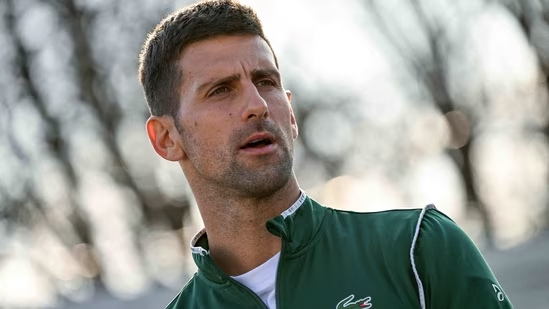Novak Djokovic's No 1 record: The upside of consistent tennis and a fit body
Novak Djokovic and Steffi Graf have been, by a considerable stretch, the two torchbearers of the world No 1 ranking of their respective men’s and women’s tours. The No 1 ride of the Serb, who surged past Graf's record of most weeks spent at the top on Monday by starting his 378th week there, though differs from the German.  PREMIUM
PREMIUM
From the time she first got there in August 1987, Graf’s 377 weeks as the world's best player were a largely choppy-free smooth sail. Till 1991, she wouldn’t be displaced from there even once, only being pulled down one spot sporadically over the next few years. That was until 1997 when she went from starting the year as No 1 to ending it at 28, two seasons before her retirement (as the world No 3, mind you).
Djokovic, in contrast, has had a more rocky ride, which, arguably, makes his record all the more remarkable. The 35-year-old has been at the summit of the ATP charts across seven different stints, having to overcome physical struggles, form slump and, well, vaccination status.
It explains why, although with a record seven year-end No 1 finishes, Djokovic lags three men—and Graf and Serena Williams—in the list of most consecutive weeks at No 1 that has Roger Federer (237 weeks) at the top ahead of Jimmy Connors (160) and Ivan Lendl (157).
Of his 22 Grand Slam titles, nine have come when Djokovic hasn’t had the world No 1 tag next to his name. And on a lot of those occasions, Djokovic has had to win Grand Slams to seize the top spot.
Like he did while walking away with the 2023 Australian Open title last month as the official fifth-best player of the world (although the unofficial and unanimous best). Like he did while entering the 2011 Wimbledon, during the course of which he clinched the No 1 ranking for the first time in entering the final. There, he defeated Rafael Nadal to not only bag a maiden Wimbledon title but also knock the Spaniard out from the top after winning all but one match and tournament until then.
In only a year, however, Djokovic had lost the No 1 spot. After winning just two Slams in 2012 and 2013 (both on his favourite courts of Melbourne), Djokovic reclaimed the No 1 ranking from Nadal by winning the 2014 Wimbledon and ending his Slam drought that went over a year.
Only through 2015 and 2016, a period where he won five of the six Slams from the 2015 Australian Open to the 2016 French Open including four on the trot, did Djokovic have a real iron grip on No 1 mantle. It’s also where he had his longest consecutive run of 122 weeks atop, between July 2014 and November 2016.
Then came the troublesome 2017 season with those elbow issues, which saw him drop of the top 10 rankings for the first time in more than a decade and into the 20s midway through 2018. Then came the colossal comeback that very year, which saw him win the Wimbledon and the US Open to get back the No 1 ranking from, again, Nadal after almost two years. In doing so, Djokovic became the first player since Marat Safin in 2000 to go from being outside the top 20 to 1 in the same season.
It took a record-extending eighth Australian Open title in 2020 for Djokovic to kickstart his fifth stint as the numero uno, his second-longest stretch of dominance comprising three Slams in 2021 and lasting till February 2022.
Here's where his unvaccinated status kept him away from participating in tournaments as well as defending his points, forcing a fall to No 8 in November last year.
Here’s also where he truly stands out. Djokovic has managed to pull the No 1 rug from the feet of Daniil Medvedev and Carlos Alcaraz—the two other world No 1s in the last year—despite playing just 13 tournaments since the start of the 2022 season (aside from Laver Cup). He’s won seven of them—including a couple of Slams and the year-ending ATP Finals—to highlight the upside of consistent tennis (take cue, Medvedev) and a fit body (take cue, Alcaraz).
That his latest spell at the peak would come after winning a Slam and in making a four-place move, the biggest jump to get to the top since the rankings were introduced in 1973, typifies the Djokovic-No 1 record tale. A little rocky, a lot remarkable.
Experience unrestricted digital access with HT Premium
Explore amazing offers on HT + Economist Start 14 Days Free Trial Already Subscribed? Sign In
Disclaimer: The copyright of this article belongs to the original author. Reposting this article is solely for the purpose of information dissemination and does not constitute any investment advice. If there is any infringement, please contact us immediately. We will make corrections or deletions as necessary. Thank you.







